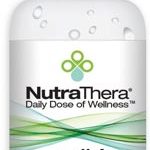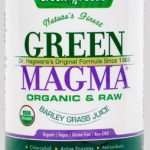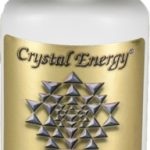Toxins. Everybody’s heard of them, but how many of us are actually familiar with them? How many of us really know what they are, where they come from and just how many of them may be inside our bodies and doing us harm? If you’re unfamiliar with the topic of toxic chemicals and ‘heavy metals’, you might want to read on…
Toxins derived from food
Unfortunately, research suggests a good deal of the toxins that get into our bodies do so because we consume them in what we eat and drink. For instance, it’s worryingly common for industrial contaminants (the likes of dioxins, mercury and polychlorinated biphenyls or PCBs) and naturally-occurring contaminants (say, the bacterial Escherichia coli or E. coli and the fungi-derived aflatoxin) to find their way into our food.
By way of example then, although it’s eaten daily by billions of people around the globe, white bread contains chemicals that surely nobody would otherwise willingly put through their digestive and other bodily systems, what with the likes of chlorine, acetone peroxide, benzoyl peroxide and nitrogen dioxide all being used as regular oxidising agents in white bread’s flour. Meanwhile, like it or not, humble old table salt is often criticised by experts for its toxic effects on the body – so much so, in fact, the US nutritional organisation The Centre for Science in the Public Interest once referred to salt as ‘the single deadliest ingredient in the food supply’1.
And worth considering too is that in the United States ‘good’ gut bacteria-killing antibiotics are used (and therefore fed to) livestock as many as eight times more than they’re used to inoculate humans against disease2. This means that in that in the US alone, should you try to avoid antibiotics – because, among other things, they do no good at all for maintaining the all-important gut flora in your intestines – it’s still likely you’ll be consuming the chemicals they contain should you eat meat and drink milk.
Plus, like it or not, vegetarians don’t get off scot-free here because, beverage-wise, studies suggest as much as 70% of the coffee produced around the world features toxic pesticides – apparently just one cup could well contain in excess of 2,000 different gastrointestinal (and potentially carcinogenic) irritants. Something to consider the next time you think of stepping into that high-street coffee shop?
Toxins derived from elsewhere
As you may have guessed by now, the number of harmful toxins – chemicals and dangerous ‘heavy metals’ – that find their way into our bodies is pretty staggering. And it’s not just because they’re present in so much of the food and drink we buy and consume, but also all around us in our everyday environments.
For example, it’s often said that young children ought not to be mollycoddled in terms of the cleanliness of their environments so their immune systems develop normally and can work effectively in later life; however it’s also important to be aware of the facts here. Research has found that crawling about on a normal home’s floor will expose a baby to the likes of dust mites, mould and mildew – fair dos, you might say; yet this accounts for daily contamination in the infant’s lungs equivalent to four cigarettes3.
And speaking of looking after children, a study published in 2011 found that 10% of women of childbearing age possess a worryingly large amount of mercury in their bodies – it even concluded that some of them may have ‘potentially hazardous levels’ of the metal in their bloodstream3. Meanwhile, nowadays you’ll find another potentially dangerous chemical, fluoride, present in everything from infant formulas to toothpaste and mouthwash to bottled water even. Is fluoride really that hazardous? Well, one scientific study suggests that, once in the body, it can act as an endocrine disruptor that negatively affects the bones, the brain and the thyroid and pineal glands, as well as your blood sugar levels4.
And finally, there’s no question that, given so many of us spend so many hours in homes, offices and travel compartments installed with air conditioning, we should be aware of how potentially harmful today’s indoor environments can be. Believe it or not, a 1992 study discovered that indoor air pollution accounts for 1.6 million deaths annually (one loss of life every 20 seconds); the direct causes for these deaths being chronic respiratory disease, lung cancer and pneumonia5. Now that’s surely something to make you think!
Toxin cleanse via supplements
Happily, however, it’s not all bad news on the toxin front. The modern lives we lead may expose us to wanton levels of toxic chemicals and ‘heavy metals’, but that’s not to say we can’t do anything about it. In addition to trying to ensure your diet is as natural and organic as possible (thus free of processed foods with all their potentially harmful, unnatural chemicals), you can easily perform a regular toxin removal via toxin cleanse supplements. Indeed, you’ll find the following three products – among many more – available on our website here at The Finchley Clinic. Why not check them out and discover just how much good they can do you…!
ORËÁ – a natural toxin remover that aids the elimination of the likes of lead, mercury, arsenic, biotoxins and solvents from the blood, organs, glands and cellular tissue.
Green Magma (Barley Grass Powder) – an organic extract of young green barley juice; regular use of this product could well improve digestion, increase energy and aid detoxification.
Crystal Energy – a detoxification supplement that ensures the toxins in your body are rendered harmless and then effectively and naturally removed.
References:
1. Jacobson M. F. ‘Press conference on salt: the forgotten killer’. Center for Science in the Public Interest. Feb 2005.
2. Epstein S. S. ‘Potential public health hazards of biosynthetic milk hormones’. Int. J. Health Serv. 1990 20 (1): 73-84. Erratum in: Int. J. Health Serv. 1991 21 (2): 373.
3. ‘Blood and hair mercury levels in young children and women of childbearing age’. Center for Food Safety and Applied Nutrition. Centers for Disease Control and Prevention. March 2001. 50 (08) 140-3.
4. ‘National Research Council Findings’. Fluoride Alert. http://fluoridealert.org/researchers/nrc/findings/. 2006.
5. Morris R. D., Audet A. M., Angelillo I. F., Chalmers T. C. and Mosteller F. ‘Chlorination, chlorination by-products, and cancer: a meta-analysis’. American Journal of Public Health. July 1992. Vol. 82 No. 7 pp. 955-963.



